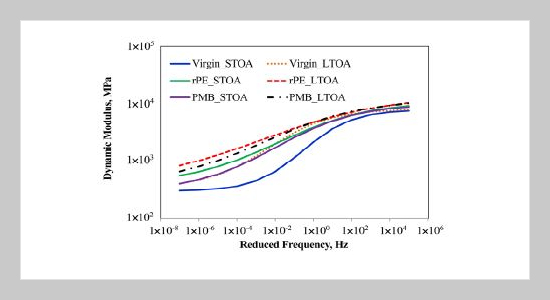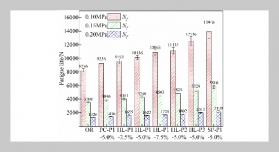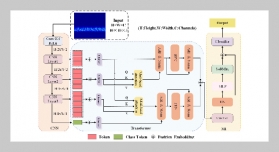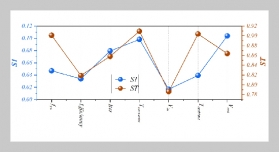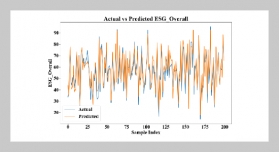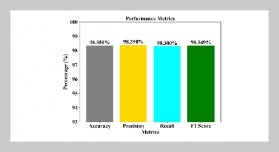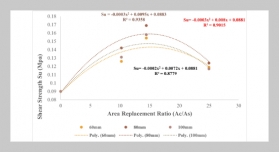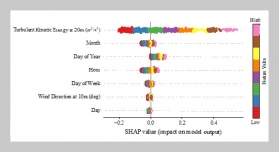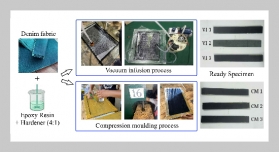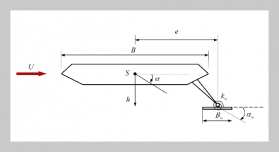Ngoc-Lan Nguyen This email address is being protected from spambots. You need JavaScript enabled to view it.1, May Huu Nguyen This email address is being protected from spambots. You need JavaScript enabled to view it.2,3, Dai-Tu Vo4, Van Quyet Truong1, Thanh-Hai Le5, and Duc-Trung Tran6
1Department of Construction Materials, Faculty of Construction Engineering, University of Transport and Communications, Hanoi, Vietnam
2Department of Bridge and Tunnel, Faculty of Civil Engineering, University of Transport and Technology, Hanoi, Vietnam
3Civil and Environmental Engineering Program, Graduate School of Advanced Science and Engineering, 1-4-1, Kagamiyama, Higashi-Hiroshima, Hiroshima 739-527, Japan
4BMT Construction Investment Joint Stock Company, Ho Chi Minh City, Vietnam
5University of Transport and Technology, Hanoi, Vietnam
6Auburn University, Auburn, Alabama, US
REFERENCES
- [1] L. Lebreton and A. Andrady, (2019) “Future scenarios of global plastic waste generation and disposal" Palgrave Communications 5(1): 1–11. DOI: 10.1057/s41599-018-0212-7.
- [2] F. Cruz Sanchez, H. Boudaoud, M. Camargo, and J. Pearce, (2020) “Plastic recycling in additive manufacturing: A systematic literature review and opportunities for the circular economy" Journal of Cleaner Production 264: DOI: 10.1016/j.jclepro.2020.121602.
- [3] L. Gu and T. Ozbakkaloglu, (2016) “Use of recycled plastics in concrete: A critical review" Waste Management 51: 19–42. DOI: 10.1016/j.wasman.2016.03.005.
- [4] L. Rigamonti, M. Grosso, J. Møller, V. Martinez Sanchez, S. Magnani, and T. Christensen, (2014) “Environmental evaluation of plastic waste management scenarios" Resources, Conservation and Recycling 85: 42–53. DOI: 10.1016/j.resconrec.2013.12.012.
- [5] W. Leal Filho, U. Saari, M. Fedoruk, A. Iital, H. Moora, M. Klöga, and V. Voronova, (2019) “An overview of the problems posed by plastic products and the role of extended producer responsibility in Europe" Journal of Cleaner Production 214: 550–558. DOI: 10.1016/j.jclepro.2018.12.256.
- [6] Z. Ismail and E. AL-Hashmi, (2008) “Use of waste plastic in concrete mixture as aggregate replacement" Waste Management 28(11): 2041–2047. DOI: 10.1016/j.wasman.2007.08.023.
- [7] S. Anuar Sharuddin, F. Abnisa,W.Wan Daud, and M. Aroua, (2016) “A review on pyrolysis of plastic wastes" Energy Conversion and Management 115: 308–326. DOI: 10.1016/j.enconman.2016.02.037.
- [8] T. Adyel, (2020) “Accumulation of plastic waste during COVID-19" Science (New York, N.Y.) 369(6509): 1314–1315. DOI: 10.1126/science.abd9925.
- [9] J. Ru, Y. Huo, and Y. Yang, (2020) “Microbial Degradation and Valorization of Plastic Wastes" Frontiers in Microbiology 11: DOI: 10.3389/fmicb.2020.00442.
- [10] S. Ali, T. Elsamahy, R. Al-Tohamy, D. Zhu, Y.-G. Mahmoud, E. Koutra, M. Metwally, M. Kornaros, and J. Sun, (2021) “Plastic wastes biodegradation: Mechanisms, challenges and future prospects" Science of the Total Environment 780: DOI: 10.1016/j.scitotenv.2021.146590.
- [11] J. Jambeck, R. Geyer, C.Wilcox, T. Siegler, M. Perryman, A. Andrady, R. Narayan, and K. Law, (2015) “Plastic waste inputs from land into the ocean" Science 347(6223): 768–771. DOI: 10.1126/science.1260352.
- [12] R. Geyer, J. Jambeck, and K. Law, (2017) “Production, use, and fate of all plastics ever made" Science Advances 3(7): DOI: 10.1126/sciadv.1700782.
- [13] R. Barra and S. Leonard. “Plastics and the circular economy”. In: 54th Global Environment Facility Council Meeting. Elsevier, 2018.
- [14] Solutions to reduce plastic waste in Industry and Trade. FINAL report_V01_20190628. Ministry of Industry and Trade in Vietnam (MOIT), 2019.
- [15] K. Park, T. Shoukat, P. Yoo, and S. Lee, (2020) “Strengthening of hybrid glass fiber reinforced recycled hotmix asphalt mixtures" Construction and Building Materials 258: DOI: 10.1016/j.conbuildmat.2020.118947.
- [16] J. Appiah, V. Berko-Boateng, and T. Tagbor, (2017) “Use of waste plastic materials for road construction in Ghana" Case Studies in Construction Materials 6: 1–7. DOI: 10.1016/j.cscm.2016.11.001.
- [17] P. S. Rajput and R. Yadav, (2016) “Use of plastic waste in bituminous road construction" IJSTE-International Journal of Science Technology & Engineering 2(10): 509–513.
- [18] M. Mourshed, M. Masud, F. Rashid, and M. Joardder, (2017) “Towards the effective plastic waste management in Bangladesh: a review" Environmental Science and Pollution Research 24(35): 27021–27046. DOI: 10.1007/s11356-017-0429-9.
- [19] L. Gu and T. Ozbakkaloglu, (2016) “Use of recycled plastics in concrete: A critical review" Waste Management 51: 19–42. DOI: 10.1016/j.wasman.2016.03.005.
- [20] A.-H. Ibrahim, (2021) “Effects of long-term aging on asphalt mixes containing SBS and PP-polymer" International Journal of Pavement Research and Technology 14(2): 153–160. DOI: 10.1007/s42947-020-0089-x.
- [21] S. Tapkin, (2013) “Optimal polypropylene fiber amount determination by using gyratory compaction, static creep and Marshall stability and flow analyses" Construction and Building Materials 44: 399–410. DOI: 10.1016/j.conbuildmat.2013.02.060.
- [22] F. Cheriet, K. Soudani, and S. Haddadi, (2015) “Influence of natural rubber on creep behavior of bituminous concrete" Procedia-Social and Behavioral Sciences 195: 2769–2776. DOI: 10.1016/J.SBSPRO.2015.06.391.
- [23] M. Rahman, A. Mohajerani, and F. Giustozzi, (2020) “Possible recycling of cigarette butts as fiber modifier in bitumen for asphalt concrete" Materials 13(3): DOI: 10.3390/ma13030734.
- [24] M. Dalhat and H. Al-AbdulWahhab, (2017) “Performance of recycled plastic waste modified asphalt binder in Saudi Arabia" International Journal of Pavement Engineering 18(4): 349–357. DOI: 10.1080/10298436.2015.1088150.
- [25] I. El-Naga and M. Ragab, (2019) “Benefits of utilization the recycle polyethylene terephthalate waste plastic materials as a modifier to asphalt mixtures" Construction and Building Materials 219: 81–90. DOI: 10.1016/j.conbuildmat.2019.05.172.
- [26] D. Ge, K. Yan, Z. You, and H. Xu, (2016) “Modification mechanism of asphalt binder with waste tire rubber and recycled polyethylene" Construction and Building Materials 126: 66–76. DOI: 10.1016/j.conbuildmat.2016.09.014.
- [27] Y. Chen, H. Wang, S. Xu, and Z. You, (2020) “High modulus asphalt concrete: A state-of-the-art review" Construction and Building Materials 237: DOI: 10.1016/j.conbuildmat.2019.117653.
- [28] G. White and C. Magee, (2019) “Laboratory evaluation of asphalt containing recycled plastic as a bitumen extender and modifier" J. Traffic Transp. Eng 7: 218–235.
- [29] A. Modarres and H. Hamedi, (2014) “Effect of waste plastic bottles on the stiffness and fatigue properties of modified asphalt mixes" Materials and Design 61: 8–15. DOI: 10.1016/j.matdes.2014.04.046.
- [30] G. White and G. Reid. “Recycled waste plastic for extending and modifying asphalt binders”. In: 8th Symposium on Pavement Surface Characteristics (SURF 2018), Brisbane, Queensland, Australia. 2018, 2–4.
- [31] S. Saadeh and P. Katawał, (2021) “Performance Testing of Hot Mix Asphalt Modified with Recycled Waste Plastic" Mineta Transportation Institute Publications: DOI: 10.31979/mti.2021.2045.
- [32] R. Bajpai, M. A. Khan, O. B. Sami, P. K. Yadav, and P. K. Srivastava, (2017) “A Study on the Plastic Waste Treatment Methods for Road Construction" International Journal of Advance Research, Ideas and Innovations in Technology 3(6): 559–566.
- [33] P. Bhawan and E. A. Nagar. Performance Evaluation of Polymer Coated Bitumen Built Roads. 2008.
- [34] A. Shenoy, (2002) “A Method to Estimate the Rheological Properties of Aged Asphalt Binders without Actually aging them" Road Materials and Pavement Design 3(3): 331–343. DOI: 10.1080/14680629.2002.9689929.
- [35] C. J. Glover, R. R. Davison, C. H. Domke, Y. Ruan, P. Juristyarini, D. B. Knorr, and S. H. Jung, (2005) “Development of a new method for assessing asphalt binder durability with field validation" Texas Dept Transport 1872: 1–334.
- [36] Y. Kumbargeri and K. Biligiri, (2016) “A novel approach to understanding asphalt binder aging behavior using asphaltene proportion as a performance indicator" Journal of Testing and Evaluation 44(1): 439–449. DOI: 10.1520/JTE20140490.
- [37] H. L. Von Quintus, C. S. Hughes, J. Scherocman, and T. W. Kennedy, (1991) “Asphalt-aggregate mixture analysis system, NCHRP Report 338" Transportation Research Record (1353):
- [38] A.-H. Ibrahim, (2019) “Laboratory investigation of aged HDPE-modified asphalt mixes" International Journal of Pavement Research and Technology 12(4): 364–369. DOI: 10.1007/s42947-019-0043-y.
- [39] F. Yin, R. Moraes, M. Fortunatus, N. Tran, M. D. Elwardany, and J.-P. Planche, (2020) “Performance Evaluation and Chemical Characterization of Asphalt Binder and Mixtures Containing Recycled Polyethylene" Plastic Industry Association:Washington, DC, USA:
- [40] NCHRP Project 1-37A, Guide for mechanistic-empirical design of new and rehabilitated pavement structures. 2004.
- [41] D. Gedafa, M. Hossain, S. Romanoschi, and A. Gisi. “Effect of aging on dynamic modulus and fatigue life of superpave mixes”. In: Airfield and Highway Pavement 2013: Sustainable and Efficient Pavements. 2013, 1040–1050. DOI: 10.1061/9780784413005.087.
- [42] P. Singh and A. Swamy, (2019) “Effect of aging level on viscoelastic properties of asphalt binder containing waste polyethylene" International Journal of Sustainable Engineering 12(2): 141–148. DOI: 10.1080/19397038.2018.1474398.
- [43] M. Buncher and M. Anderson. MS-2 Asphalt Mix Design Methods. 2014.
- [44] G. Polacco, S. Berlincioni, D. Biondi, J. Stastna, and L. Zanzotto, (2005) “Asphalt modification with different polyethylene-based polymers" European Polymer Journal 41(12): 2831–2844. DOI: 10.1016/j.eurpolymj.2005.05.034.
- [45] E. Saroufim, C. Celauro, and M. Mistretta, (2018) “A simple interpretation of the effect of the polymer type on the properties of PMBs for road paving applications" Construction and Building Materials 158: 114–123. DOI: 10.1016/j.conbuildmat.2017.10.034.
- [46] N. Saleh, B. Keshavarzi, F. Yousefi Rad, D. Mocelin, M. Elwardany, C. Castorena, B. Underwood, and Y. Kim, (2020) “Effects of aging on asphalt mixture and pavement performance" Construction and Building Materials 258: DOI: 10.1016/j .conbuildmat.2020.120309.
- [47] Standard Method of Test for Determining Dynamic Modulus of Hot Mix Asphalt (HMA). Standard. International Organization for Standardization, 2007.
- [48] P. Li, Z. Ding, and Z. Zhang, (2013) “Effect of temperature and frequency on visco-elastic dynamic response of asphalt mixture" Journal of Testing and Evaluation 41(4): DOI: 10.1520/JTE20120044.
- [49] A. Buss, M. Elkashef, and W. Stephenson, (2018) “Extracting more from dynamic modulus data using split-plot repeated measures analysis" Journal of Testing and Evaluation 46(1): 351–364. DOI: 10.1520/JTE20170052.
- [50] M. Arefin, T. Quasem, M. Nazzal, A. Abbas, and Y. AbuHassan, (2020) “Effect of short-term and longterm ageing on dynamic modulus of foamed warm mix asphalt" International Journal of Pavement Engineering 21(4): 524–536. DOI: 10.1080/10298436.2018.1493202.
- [51] X.-J. Li, Y. Li, J. Li, Y. Shen, C. Zhang, and J.Wei, (2020) “Effect of laboratory long-term oven aging on the stiffness of asphalt mixtures" Construction and Building Materials 258: DOI: 10.1016/j.conbuildmat.2020.120252.
- [52] X. Li, N. Gibson, A. Andriescu, and T. S. Arnold, (2017) “Performance evaluation of REOB-modified asphalt binders and mixtures" Road Materials and Pavement Design 18: 128–153. DOI: 10.1080/14680629.2016.1266754.
- [53] R. Nemati and E. Dave, (2018) “Nominal property based predictive models for asphalt mixture complex modulus (dynamic modulus and phase angle)" Construction and Building Materials 158: 308–319. DOI: 10.1016/j.conbuildmat.2017.09.144.
- [54] W. Mogawer, A. Austerman, I. Al-Qadi,W. Buttlar, H. Ozer, and B. Hill, (2017) “Using binder and mixture space diagrams to evaluate the effect of re-refined engine oil bottoms on binders and mixtures after ageing" Road Materials and Pavement Design 18: 154–182. DOI: 10.1080/14680629.2016.1266756.


